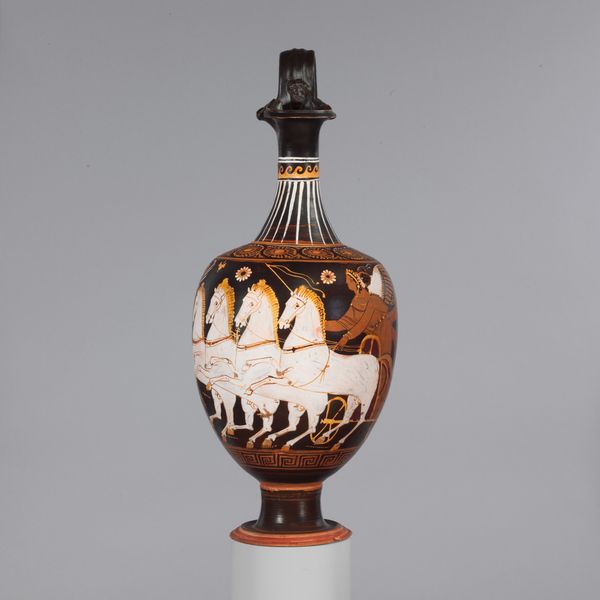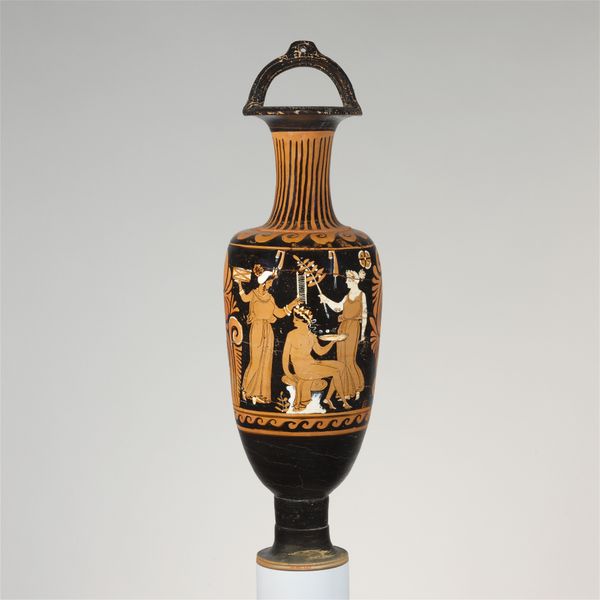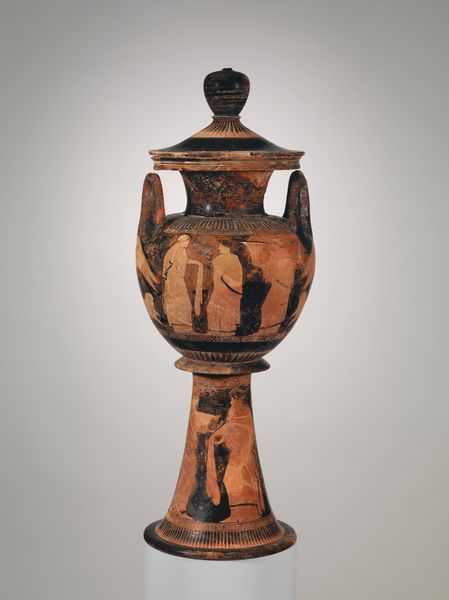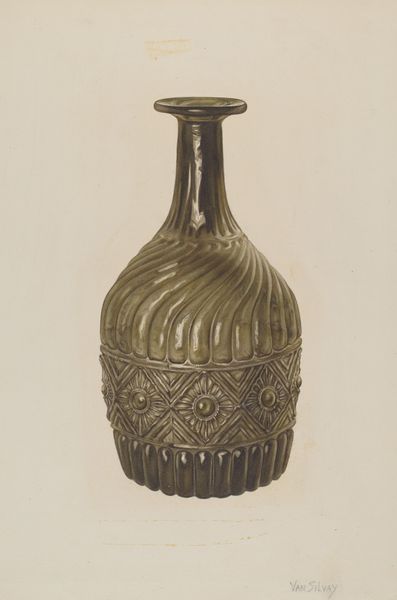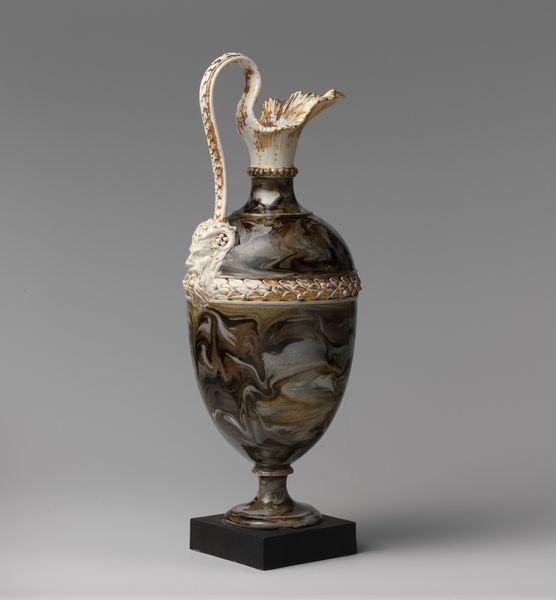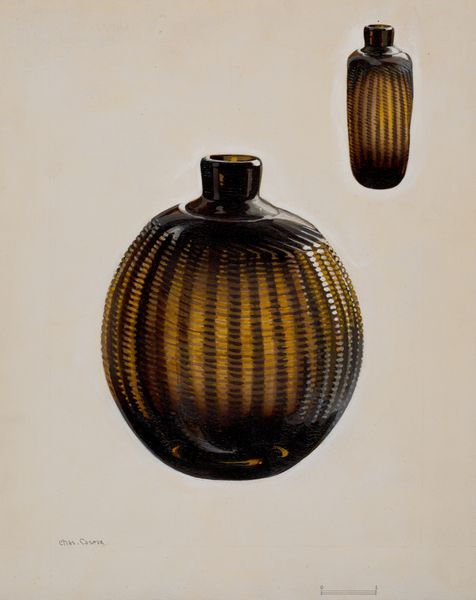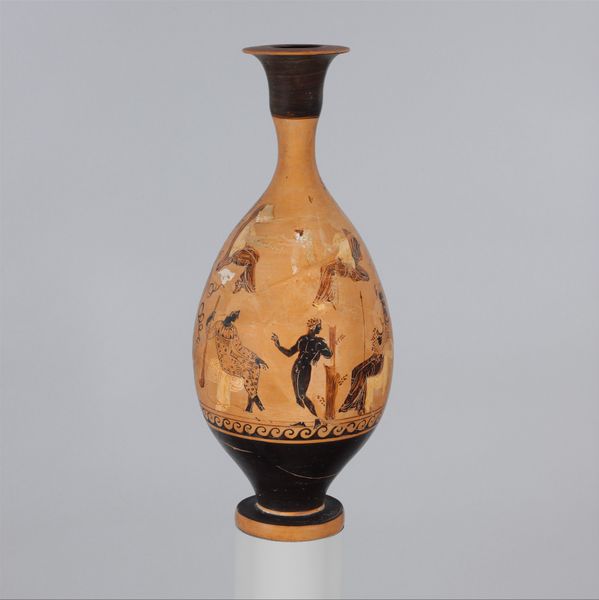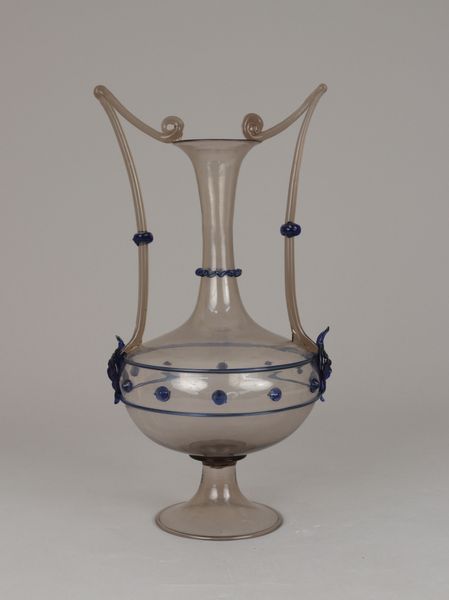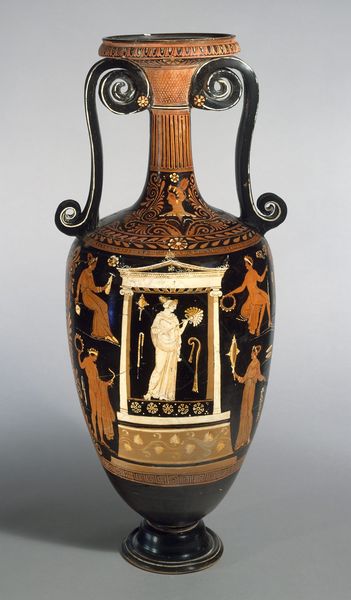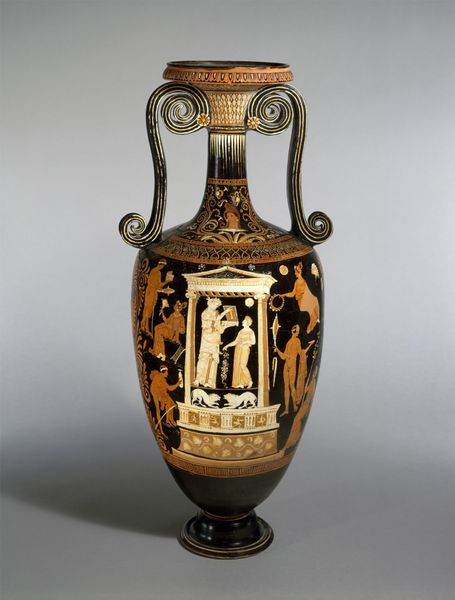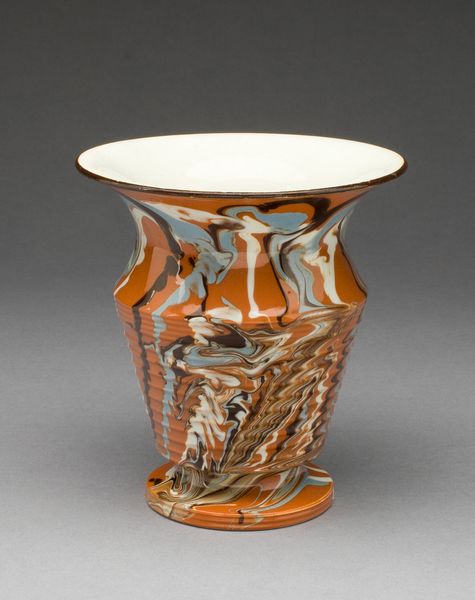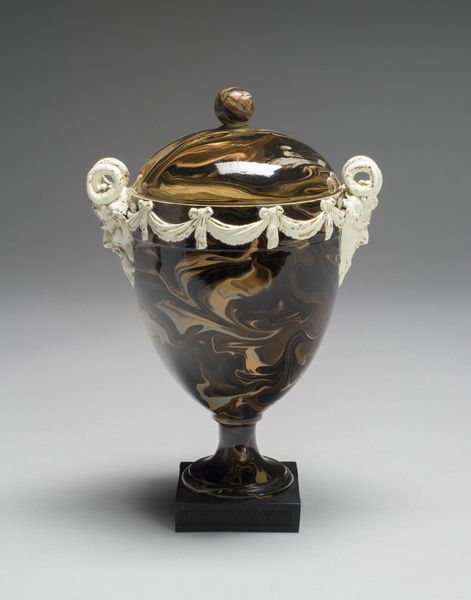
drawing, painting, ceramic, earthenware, terracotta
#
drawing
#
narrative-art
#
painting
#
greek-and-roman-art
#
ceramic
#
vase
#
figuration
#
roman-art
#
earthenware
#
ancient-mediterranean
#
horse
#
ceramic
#
terracotta
Dimensions: H. with handle 16 3/4 in. (42.6 cm)
Copyright: Public Domain
Curator: Here we have a terracotta oinochoe, a jug made around 325 BC, and attributed to the Stuttgart Group. You can find it here at the Met. Editor: It’s… dynamic. Feels like it’s trying to leap off the shelf. The stark contrast and the horses make it seem perpetually in motion, doesn't it? Like catching a scene mid-gallop. Curator: Absolutely. The shape itself contributes. An oinochoe was typically used for pouring wine or water, and this one, being terracotta earthenware, speaks to widespread production and use. The form and decoration reflect social practices tied to banquets and symposiums of the time. Editor: Symposiums! Imagine using *this* as a humble vessel for pouring wine. I keep getting drawn back to the horses. Are they divine horses or just some nobleman's fancy ride? There's a story in those lines; I feel it. Curator: It likely depicts a mythological scene. The rendering of the horses pulling the chariot evokes powerful imagery connected to gods or heroes in action. Vases like these provided narratives readily accessible for the public; consider them comic books of the ancient world. Editor: A very *refined* comic book. I wonder how it was painted... Was it a single artist? What kind of tools did they have? The whole production of it feels like magic now, this glimpse into daily life that feels, somehow, immortalized. Curator: Quite a few of these vessels survive today. Workshops mass-produced this pottery, although skilled painters rendered the mythological scenes. This suggests a multi-tiered workshop environment aimed to efficiently cater to the ancient markets. Editor: I love picturing some artisan in a crowded studio, sketching out gods and horses... Thanks to them, we have these little echoes. Makes me wonder what our everyday vessels will say about us in a couple thousand years. Curator: Indeed, it is a fascinating artifact, bringing into perspective artistic skill, manufacturing and socio-cultural customs that provide a view of daily life in classical antiquity. Editor: And maybe a humbling reminder that even simple objects can carry whole worlds within them. Food for thought, certainly!
Comments
No comments
Be the first to comment and join the conversation on the ultimate creative platform.
